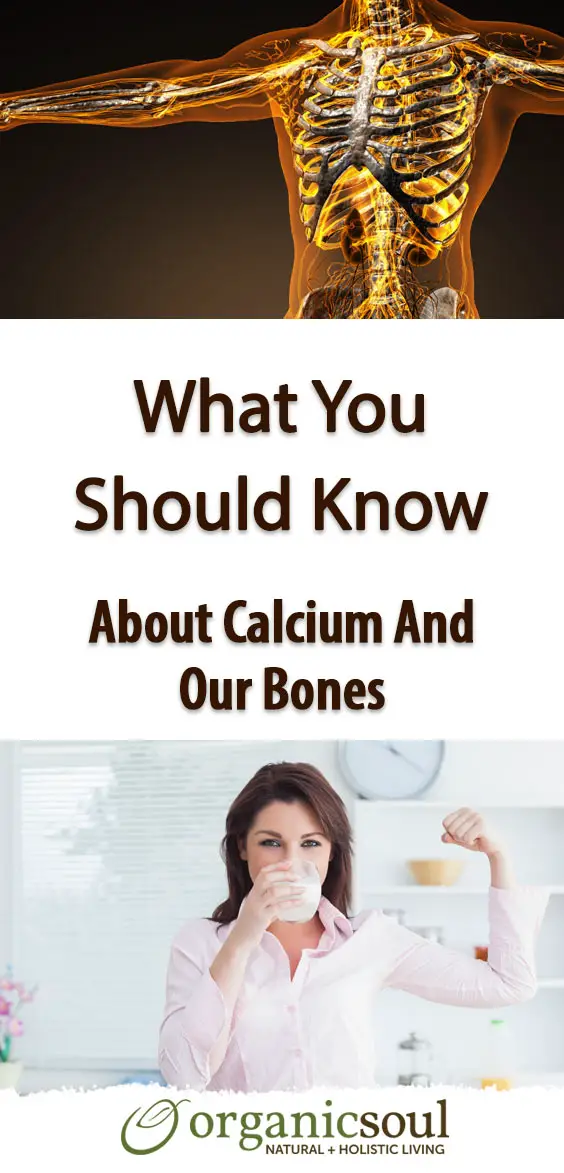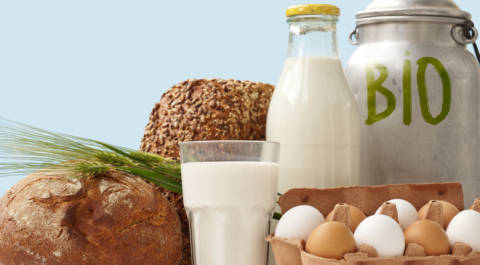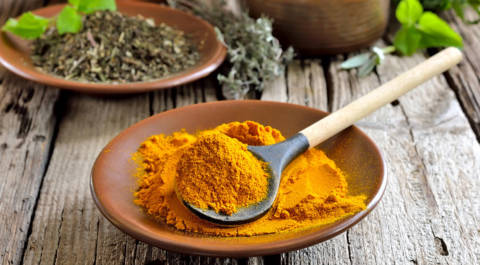
There is more calcium in the body than any other mineral and almost all of the body's stores (1.5kg) is found in the bones and teeth. Every 12 months, 20% of adults calcium is resorbed and replaced with new bone tissue – provided our nutrition is optimal and we are not making war on our bones with a variety of dietary or lifestyle indiscretions.
Like Organic Soul on Facebook
The calcium stored in our bones and teeth is resorbed and released into our bloodstream for a variety of body requirements on an “as needed” basis. In addition to making up much of our bone tissue, calcium is required for blood clotting, neurotransmitter release (brain chemicals that act as message bearers), muscle contraction, and normal heartbeat.
How we make new bone, repair bone damage and how bone loss can occur is vitally important for everyone to know because without our bones, how would we stand?
How Bones Are Built
The rate at which bone tissue renews is truly remarkable. Our long bones (called cortical bones) such as our arms and legs are made of very dense bone tissue. Their “turnover” rate for 100% renewal is 10-12 years. Less dense bones (called trabecular bones) such as the heel of tire foot and spinal vertebrae have a turnover time of 2-3 years.
Bones are living tissue and best drought of a “mineralised cartilage” with the capacity to grow, mend and renew throughout our lifetime. Two types of bone cells are important to our understanding of how bones are built.
The first bone cell is the osteoclast which breaks down or resorbs bone tissue. The second bone cell is the osteoblast which rebuilds and stabilizes new bone tissue. Osteoclast (the “breakers”) continually travel through our bone tissue looking for older bone in need of renewal.
Osteoclast dissolve or resorb old bone and leave behind tiny unfilled spaces. Osteoblasts (the “builders”) then move into these spaces and produce new bone tissue.
This is the continual process of resorption and new bone formation that is the means by which our bones are repaired and maintained.
Osteoporosis (porous brittle bones) is the result of osteoclast dominance – simply put, more breaking down than building up with the result the number of unfilled spaces increases and the bone become susceptible to breakage.
Decreased bone mass may also result from deficiencies of essential nutrients including Vitamin D, Magnesium, Manganese, Silicon, Zinc, Vitamin B6 and boron. Even though we may assume we are getting sufficient dietary calcium, this is not the whole story, as we'll learn below.
Lifestyle Choices And Food
What we chose to eat and how we live both drastically influence how healthy our bones will be. Normal amounts of protein foods (meats, fish, eggs, poultry) are not a problem to bones, but some forms of purified proteins. (Casein, lactalbumin, egg whites), such as those used in meal replacement drinks, can seriously delete calcium stores in the body.
Likewise, very high protein intake (like the diets used by athletes and bodybuilders) draws calcium from the skeleton at an alarming rate. This happens because the body tries to neutralize the excess, very acidic protein in the bloodstream by drawing on the alkalizing action of calcium from bones.
Excess salt robs bones of calcium. High intakes of unprocessed fibre foods (wheat, bran, etc) inhibit uptake of calcium from the intestines. High oxalate foods (rhubarb, spinach, chocolate) block calcium absorption. Better vegetable sources of calcium are green cabbage, kale, broccoli, bok choy, dark green lettuces and sea vegetables like nori, hijiki and arame.
Lack of weight-bearing exercise causes mineral loss from bones. It is very important to maintain a steady safe exercise program throughout life and help the calcium stay in our bones as a result. Walking is highly recommended and walking with 500g-1kg hand weights helps even more.
The saturated fats in dairy products, and the amount of unrecognized lactose (milk sugar) intolerance in the general population, demonstrates that calcium is not well absorbed from milk. 72% of the world's population does not use dairy products to the extent Europe, America and Australia do and where is osteoporosis a problem? In Europe, America and Australia!!
Calcium Controversy
A growing number of scientific research is revealing how little we really know about calcium and bone maintenance – even though we appear to know a great deal! Osteoporosis is not a calcium deficiency but rather a calcium loss disorder; that is, calcium is being lost from bones faster than it is being replaced regardless of how much calcium is consumed.
Other fallacies in the calcium and bone argument include:
- It is not inevitable that bone loss occurs simply because we age.
- Calcium supplements – by themselves – do not guarantee sage bone calcium levels.
 More important factors determine calcium status and bone health and these include:
More important factors determine calcium status and bone health and these include:
- Appropriate weight-bearing exercise.
- Monitoring acidic conditions which destroy dietary calcium – for example high protein diets, use of antacid preparations that contain aluminium, use of meal replacement formulas that contain “purified proteins”.
- Reducing alcohol and salt intake.
- Reducing saturated fat intake and favoring more use of fish, linseed and evening primrose oils as supplements that improve calcium absorption, and monitoring interaction with medications that block or destroy calcium.












